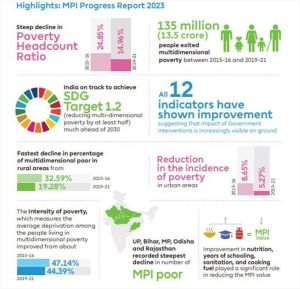Nataraja at G-20
- The 27-foot Nataraja statue, the tallest of its kind in the world, will be displayed at Bharat Mandapam in New Delhi’s Pragati Maidan.
- The statue, an ashtadhatu (eight-metal alloy) piece of art, was crafted by sculptors from Swamimalai in Thanjavur district of Tamil Nadu.
- The design draws inspiration from three revered Nataraja idols: the Thillai Nataraja Temple in Chidambaram, the Uma Maheswarar Temple in Konerirajapuram, and the Brihadeeswara (Big) Temple, a UNESCO World Heritage Site in Thanjavur.
Additional Information
- The Cholas, who ruled over much of peninsular India during their peak around the 9th-11th centuries AD, were great patrons of art and high culture.
- They were devout Shaivites, building elaborate Shiva temples across their territories. Although Shiva was first portrayed in sculpture as Nataraja in the fifth century AD, its present, world-famous form evolved under the Cholas.
- The sculptors who created the 27-foot-tall Bharat Mandapam Nataraja trace their lineage 34 generations back to the Cholas.
- The process used was the traditional ‘lost-wax’ casting method, indigenous to the Chola era.
World Health Assembly
- The World Health Assembly (WHA) is the forum through which the World Health Organization (WHO) is governed by its 194 member states. It is the world’s highest health policy setting body and is composed of health ministers from member states.
- The members of the WHA generally meet every year in May in Geneva at the Palace of Nations, the location of WHO Headquarters.
- The main tasks of the WHA are to decide major policy questions, as well as to approve the WHO work programme and budget and elect its Director-General (every fifth year) and annually to elect ten members to renew part of its executive board.
- The WHA is also responsible for the endorsement of the WHO Family of International Classifications, a series of internationally standardized medical classifications, including the International Classification of Diseases (ICD) and the International Classification of Functioning, Disability and Health (ICF).
Heat Index
- Iran has experienced extreme heat, with a heat index of 70 degrees Celsius in the coastal part of the country.
- Heat index, or apparent temperature, is a measure of how the temperature feels to humans, and is determined by relative humidity and air temperature.
- Dr. Robert Steadman’s 1979 formula for calculating heat index was used, considering a typical adult human of either sex.
- High humidity can lead to heat stress, which can lead to heat-related exhaustion, rashes, and other symptoms.
- High temperatures make it difficult for the body to lose excess heat through perspiration, while low humidity makes evaporation easier.
- A heat index value of 67°C or above can be extremely dangerous for people and animals with direct and prolonged exposure.
- Climate change is likely to continue to witness record-breaking heat index values across the world, and we must invest in early warning, make changes to work timings, and find sustainable cooling solutions.
National Multidimensional Poverty Index 2023
- NITI Aayog has released the National Multidimensional Poverty Index: A Progress Review 2023.
- NITI Aayog, as the nodal agency for MPI, has been responsible for constructing an indigenized index for monitoring the performance of States and Union Territories in addressing multidimensional poverty.
- The national MPI model retains the ten indicators of the global MPI model, staying closely aligned to the global methodology.
- It has three equally weighted dimensions – Health, Education, and Standard of living – which are represented by 12 indicators.
- It also adds two indicators, viz., Maternal Health and Bank Accounts in line with national priorities.
- This is the second edition of the national MPI and is a follow-up to the Baseline Report published in November 2021.
- It provides multidimensional poverty estimates for India’s 36 States & Union Territories.
- These estimates have been computed using data from the 5th round of the NFHS (NFHS-5) conducted in 2019-21.

